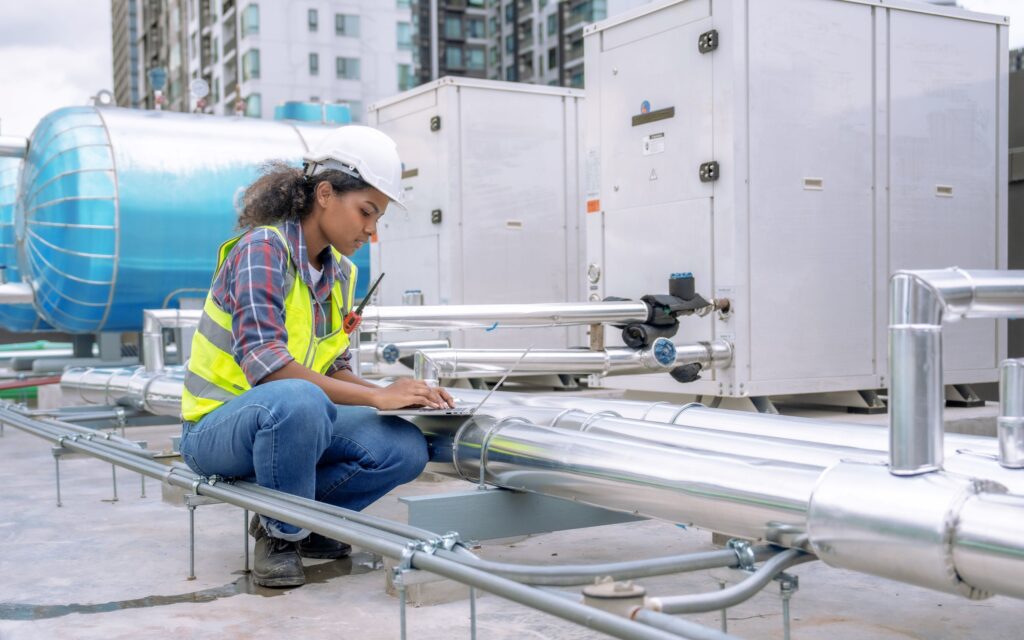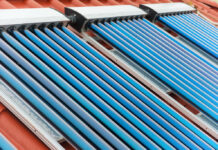Commercial buildings account for a large amount of water usage. Although manufacturing and agriculture industries take up a significant portion of overall commercial consumption, commercial buildings aren’t far behind.
That said, as the world focuses on going green and building a sustainable future, commercial property owners should start rethinking their water usage. And to help you get started, here are valuable tips to help you conserve water in your commercial building or office space:
- Install A Rainwater Harvesting System
One of the smartest moves you can make to conserve water is to install a rainwater harvesting system. Rain falling from the sky is free, so why let it drain and go to waste? Collecting this water source can be a huge step toward your commercial building’s water sustainability and efficiency, especially if you’re in an area prone to heavy rainfall annually.
However, this doesn’t have to be a significant project. If you’re on a tight budget, you can start by setting up numerous rain barrels to capture excess water. You can use it for watering your commercial landscape or as fire preparedness and protection. You can also repurpose the collected water in your commercial buildings to flush the toilet or for cleaning purposes.
If you can stretch your budget, you can also install a comprehensive filtration system with the water tank to provide clean drinking water to tenants. This is particularly beneficial if you live in areas with seasonal drought conditions and regular water restrictions, ensuring an uninterrupted water supply within your commercial buildings.
If you’re thinking of installing a rainwater harvesting system, consult reputable manufacturers and installers to find suitable water tank systems for your commercial building. Most providers can easily deliver your new tank and ensure proper installation on-site.
- Install Water-Efficient Plumbing Fixtures
Another great way to conserve water in commercial buildings is to replace old plumbing fixtures with water-efficient ones. Retrofitting your commercial building with innovative plumbing fixtures such as high-efficiency toilets, low-flow showerheads, and faucet aerators can significantly reduce water use and associated costs.
Not only that, but water-efficient plumbing fixtures can also assist your commercial building in gaining LEED (Leadership in Energy and Environmental Design) certification, which is a widely used green building rating system worldwide.
Before starting your retrofitting project, check various water-saving initiatives, resources, and products to help save water and reduce operating costs.

- Have A Routine Plumbing Maintenance
Plumbing is one of the unsung heroes of any commercial building. Providing clean water on demand while keeping wastewater as far away as possible, your commercial plumbing system often works hard every day.
And while it plays a crucial role in the efficiency of your commercial building, the plumbing system often gets attention once it stops doing its job. Common plumbing issues, from pipe leaks to dripping faucets and running toilets, waste a considerable amount of water daily. Aside from increased utility bills, these plumbing issues may cause extensive and costly water damage.
That said, regular preventive maintenance allows you to keep your plumbing system in tip-top condition. You can catch and fix minor issues before they become disastrous, saving you money and time while keeping your commercial building sustainable.
- Leverage Smart Water Monitoring
Water usage in commercial buildings can be challenging to manage. That said, you can take advantage of a smart water monitoring system to access your property’s water consumption data.
Most technology allows you to monitor your property’s hourly, daily, monthly, and yearly water consumption and can also be broken down into valuable metrics such as average gallons a day or estimated cost per year. With this information at your fingertips, you can maximize your facility benchmarking efforts while illustrating the efficiency of best water usage practices.
- Optimize Cooling Tower
In commercial buildings, a cooling tower is primarily used for water that’s been heated during the air conditioning process. These towers exchange the heated water for water that has cooled down through several pipes.
By design, cooling towers use significant volumes of water due to evaporation, blowdown, and drift. Moreover, cracks, runoff, and leaks may also occur if cooling towers are not maintained regularly.
As such, you want to implement regular inspection and maintenance schedules to ensure that your commercial building’s cooling tower is operating efficiently. You can also use innovative technologies to monitor your cooling tower’s efficiency, including cycles of concentration and overall water usage, which can help you maximize its output.
Takeaway
Between the rising costs of bills and droughts caused by global warming, conserving water has never been more critical than today. As one of the most significant contributors to water wastage, commercial building owners should start implementing the above strategies to help save gallons of water annually and do their part for the environment.








